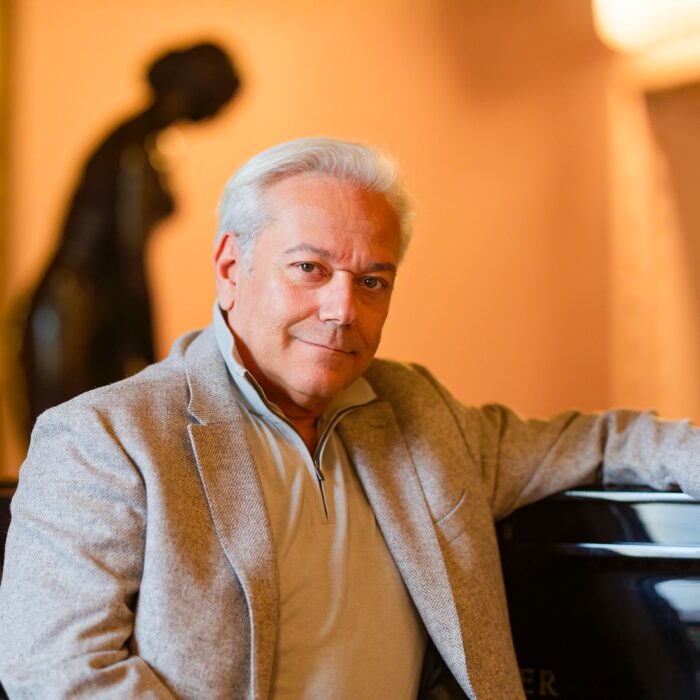
Q & A: James Robinson on His New Production of ‘Galileo Galilei’ & Philip Glass
By Francisco SalazarSince 2008, James Robinson has served as the Artistic Director of the Opera Theatre of Saint Louis (OTSL). He has emphasized a great deal on bringing modern works to the company and has directed such operas as Terence Blanchard’s “Champion” and “Fire Shut Up in My Bones,” John Adams’ “The Death of Klinghoffer,” Marc Blitzstein’s “Regina,” Jack Perla’s “Shalimar the Clown,” and Ricky Ian Gordon’s “27.”
Outside of his work at OTSL, he has also helmed numerous world premieres at the San Francisco Opera, Houston Grand Opera, Canadian Opera Company, Opera Australia, Royal Swedish Opera, Seattle Opera, LA Opera, the Wexford Festival, and the Santa Fe Opera.
This season at OTSL, he is bringing back one of Philip Glass’ lesser-known works, “Galileo Galilei.” OperaWire had a chance to speak with Robinson about the opera and the importance of the historical figure in today’s landscape.
OperaWire: When and how did you come to this project?
James Robinson: We had been planning a world premiere of a new piece for 2024 but it became apparent, after a read-through/sing-through of the work, that it really wasn’t going to be quite ready. Instead of rushing that team, we decided to pivot. I’ve always been intrigued by Galileo Galilei and this seemed like a good fit for us. As the artistic director at OTSL, I try to keep a running list of possibilities for rep and this has been on the list for a number of years.
OW: Have you spoken to Philip Glass about the work or did you have any contact with him before you started your concept for the production?
JR: Unfortunately, no. We would be thrilled if he decided to come see our production, of course, but I don’t know if his schedule will permit that. We were delighted he came to the US premiere of The Trial which we did a few years ago.
OW: Tell me about your concept and what want to tell with your production.
JR: Well, since the opera is told in reverse order of Galileo’s life, we thought the final scene was the real clue to how to approach the piece. It’s a very theatrical work and one can also say that the world in which Galileo was working was also very theatrical. The Church was full of pageantry and theater, of course, and this was instructive. It’s a memory piece, too, so we wanted to bring the idea of that into the world. Although it’s rooted in an early Baroque Italian period, there are also modern touches.
OW: Tell me about the research that you went through to come to your concept.
JR: Dava Sobel’s book, Galileo’s Daughter, was very enlightening as it deals with Galileo’s relationship with his daughter. We also gained a lot of information from the Galileo museum in Florence, and a visit to the Church of Santa Maria Sopra Minerva in Rome was helpful. There’s a lot of information out there, of course, and we had an opportunity to cull those sources. As with any opera, I spent a lot of time just listening to the music. That’s always the best way for me to enter a new opera, sonically.
OW: Galileo was a scientist, that questioned and challenged the status quo. How do you think this story is relevant to the time we are living in?
JR: Well, even though the Holy Roman Empire and the Church may not be as powerful and all controlling as they were in the early 16th century, we certainly have our parallels today with our own legislative and political bodies which are often controlled by religious factions and science-denying politicians. One only has to look at hearings on climate change, vaccinations, AIDS, etc to realize that government entities are still blindly driven by religious dogmas. So this opera is very resonant.
OW: Tell me about the cast you are working with and how has it been to work with them. Have you worked with any of the artists before?
JR: We are fortunate to have such a great cast and conductor. I’ve worked with Paul Groves (older Galileo) a number of times, most recently in Terence Blanchard’s Champion at the Met and Chicago. I worked with Vanessa Bacerra at the Washington Opera, and Hunter Enoch in Tosca last season at OTSL. Sean Michael Plumb is a terrific younger Galileo, and we have a slew of young artists in various roles. It’s been a great deal of fun to explore this work together and they all bring their own research and experience. And to our great surprise and relief the opera falls wonderfully off the page. I can’t say enough about Kwamé Ryan, our conductor, who has been a terrific collaborator. Finally, it’s a first rate
design team and most of my usual collaborators.
OW: How does Philip Glass’ music shape the way you direct the work and does it differ from other works you have done?
JR: I really adore Glass’ music but this is my first crack at one of his operas. Initially, I was worried about how it would all work, but quickly it became clear that there’s great skill at work in terms of theatricality. It’s a wonderful libretto, too. You have to give yourself over to the musical vocabulary and look a the subtlety therein.
OW: What do you hope people take away from the production?
JR: I’d say that I hope the audience gains fresh insights into the man Galileo and his journey. We are not trying to answer all the questions in this production — but we are interested in posing the questions. There’s a lot to contemplate and I hope that is one of the big takeaways. And it’s just such a gorgeous gem of a piece with ravishing music.


